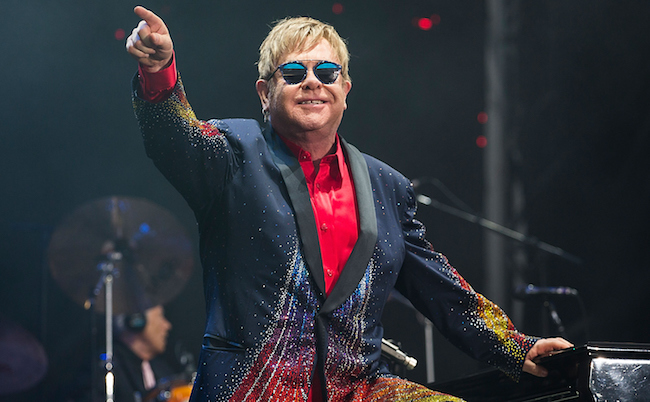
In the late ’80s and early ’90s, Elton John’s career was in a bit of a drought. After years as an untameable glam-rock icon, he had settled into an Adult Contemporary rut, making albums like Leather Jackets and Made in England, which sold well among his dedicated fan base, but failed to make a dent with critics, or add any new staples to his catalog. As Reg entered his 50s, it couldn’t help but seem like he would never get his old groove back. It seemed fitting that the only work of his from this time to get much recognition, aside from his soundtrack work, was his Princess Diana-themed remake of “Candle in the Wind.”
Anyone who pronounced John’s career over, however, would be proven thoroughly wrong, as he would turn things around entirely, embarking on a hot streak that has lasted for about 15 years now. The moment where the turnaround really started happening was 2001, where he gave us Songs from the West Coast. When promoting the album, he said that two of his biggest inspirations were Ryan Adams and Rufus Wainwright, and sure enough, you can hear the influences of both coming through here. If the problem with his ’90s albums was that he was simply rehashing familiar love song tropes, what made this album different was the thorough character studies of tracks “This Train Don’t Stop There Anymore,” “The Emperor’s New Clothes,” and “Ballad of the Boy in the Red Shoes.” After several albums where he merely bashed out songs, Elton John was finally telling stories again.
Any concern that this comeback was going to be a one-off fluke was extinguished three years later, with the excellent Peachtree Road. The album was a decidedly pastoral effort, blending elements of country and soul. The formula was particularly successful on the spiritual “Answer in the Sky,” with its soaring vocal. Following that, John and co-writer Bernie Taupin looked back to their past efforts with The Captain and the Kid, the follow-up to 1975’s Captain Fantastic and the Brown-Dirt Cowboy. With this, John was exploring new terrain while still looking back at one of the most memorable parts of his journey.
In 2010, with his own career once again in a great place, John set about rescuing a friend of his, Leon Russell. After being a major rock star in the ’70s, Russell’s fame had faded considerably, and he was struggling to get his life on track. The result of their collaboration was The Union, an inspired album featuring both performers at the top of their game. While John has several fine moments, he lets Russell shine on “If It Wasn’t for Bad,” the opening track that he wrote by himself. The album was an inspired blend of country and rock ‘n roll from two great performers, one of whom was now deep into an impressive comeback, the other who had rediscovered his purpose in life.
After another critically acclaimed solo effort with 2013’s The Diving Board, John came back this year with Wonderful Crazy Night. Out of all of his late-period efforts, this one harkens back to his prime the most. The title track that opens the record is a joyous piano-pop anthem that could have fit on any of his best ’70s records. While his introspective late-period works have been incredibly rewarding, those of us who loved “Saturday Night’s Alright for Fighting” couldn’t help but be thrilled at the sight of Elton John just having fun again.
The late-career revival of Elton John gets talked about from time to time, but it hasn’t really gotten the same hype as similar career renaissances for Bob Dylan and Bruce Springsteen, which is a shame. After years of uninspiring adult contemporary output, Elton John rediscovered his muse, and is once again making vital music. If you think the list of must-buy Elton records stops at Captain Fantastic, you’d be sorely mistaken.






